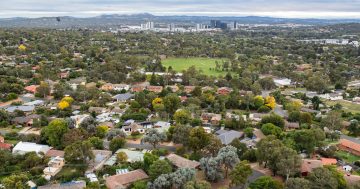
Canberrans with disadvantage know straight away when we get planning decisions wrong. Photo: File.
Canberra is only part of the way through a major review of its planning system yet the city we live in is already radically transformed.
New suburbs like Coombs, Wright, Forde and Whitlam are emerging as population centres and the skylines of older suburbs like Woden, Dickson and Belconnen are getting higher with denser living.
While urban renewal is being attempted in larger centres, older suburbs like Calwell and Charnwood have run down community spaces.
Some town centres established in the last 20 years still feel incomplete. Gunghalin is only now getting a cinema, and cracks are emerging in relatively new infrastructure – sometimes literally.
New precincts are on the horizon. In some cases, developers have pursued deep engagement with the community from the master planning stage onwards. Most have not.
The hub and spoke model of planning in Canberra where town centres were surrounded by satellites, an outgrowth of city design from the period of the Griffin Plan, is no longer the norm.
Canberra is a growing town through migration and births. There are also growing numbers of older Canberrans. Retirement communities are growing and more people are getting around using mobility aids and needing on-demand transport.
And in this change, people are being left behind. We have pockets of poverty, homelessness and inequality entrenched by housing unaffordability and cost of living. The city’s transformation risks are exacerbating disadvantage and forcing vulnerable people into places that isolate and exclude.
Further, climate change, fires and the pandemic are changing the way we interact with private and public space. After a year of smoke and lockdowns, we all have things to say about the quality of the homes we live in, internet access and the streets and walking tracks that surround them.
While change happens around us, our planning processes, priorities and engagement mechanisms have not adjusted to reflect a changing population or been up to the task of responding to community need. And the outcomes of the planning process have not worked for all of us.
One reason is that the planning debates we have in Canberra often completely miss those who are most affected by planning outcomes but wind up being the least engaged in the discussions which seek to shape the city.
We need to reboot planning conversations in our city, so we move beyond a David and Goliath loop between important neighbourhood voices and developers. Canberrans with disadvantage are a good place to start – they are canaries in the coal mine who know straight away when we get it wrong.
For instance, people without cars know when transport links are broken; young people can tell us when we fail to plan for space to play and gather; small community groups know when they can’t find somewhere to meet; older people with disability know where the cracked or missing footpaths are; and people in new suburbs know when housing is built in places with no facilities.
And people who survive in substandard housing or rough sleep on our streets can surely describe what it’s like when public places offer no relief from our heat islands or freezing mid-year winds.
Giving power to these voices requires dedicated social planning resources in government that builds leadership, knowledge and understanding to drive inclusive planning. Knowing community needs would be a good start through a needs analysis of transport, community facilities and community development needs.
We cannot let developers build and assume great things will come. A priority must be ensuring developers take a curatorial approach to building communities and vibrant amenities that will serve us all well for the long term.
We also can’t assume that affordable and accessible housing will pop up like mushrooms after a summer rain. A new planning system must be geared to increase affordable housing supply across Canberra to meet a shortfall of 3000 dwellings and ensure liveable design features in housing.
Here in the ACT, we know what happens when you don’t keep a keen eye on quality whether it be pools, schools or housing – so the new system must also drive improved standards including building quality, energy efficiency, accessibility and greenspace.
Everywhere you look, this Canberra of ours is undergoing rapid, profound and permanent change – we need our planning debates and the new planning system to be up to the task of shaping a place that truly works for all of us.
Craig Wallace is the Acting Chief Executive Officer of the ACT Council of Social Service. To read the ACTOSS submission, visit ACTCOSS.





















